R4 (Rapid Robust Ripple) modulation technology provides a compensation-free control loop that eliminates external compensation resistors and capacitors.
The R4 control loop is a unique analog control loop based on a hysteretic current mode, the simplest control topology. It makes control loop decisions using an internally generated synthetic current signal. As a result, the loop is inherently stable with optional, digitally adjustable gain.
Unlike other methods of regulation, R4 has both variable frequency and variable duty cycle. This level of flexibility reduces load step deviation by up to 67% and peak-to-peak deviation by up to 46%.
R4’s superior control loop significantly reduces output voltage variation, resulting in less output capacitance. There’s no overshoot or undershoot, just increased efficiency and decreased BOM and board size.
Key Features
- Exceptionally high control loop bandwidth
- Inherently stable architecture
- Ability to adjust switching frequency and duty cycle in response to a transient load
- Seamless PFM to PWM transition
Comparison: R4 vs. Voltage Mode vs. Constant On Time (COT)
We compared these three controllers using an external transient load generator (12A Step @ ~25A/µµs) under identical testing conditions:
- Vin = 12V
- Vout = 1.0V
- Switching frequency = 500kHz
- Lout = 220nH, DCR = 0.25mOhm
- Cout = 220µF x4, ESR = 4m/cap (ceramic MLCC caps)
Voltage Mode Control Loop
In response to load transients, voltage mode control has variable duty cycle but fixed frequency. That fixed frequency, combined with the voltage mode’s lower bandwidth, causes delays, which increase Vout deviation.
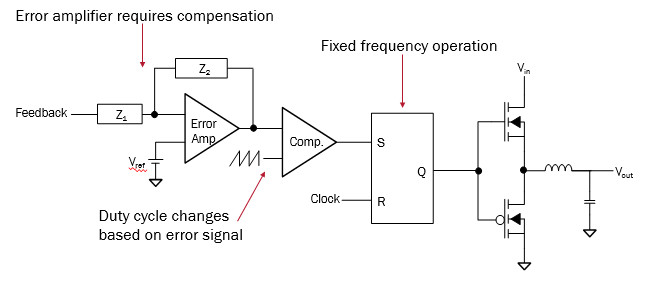
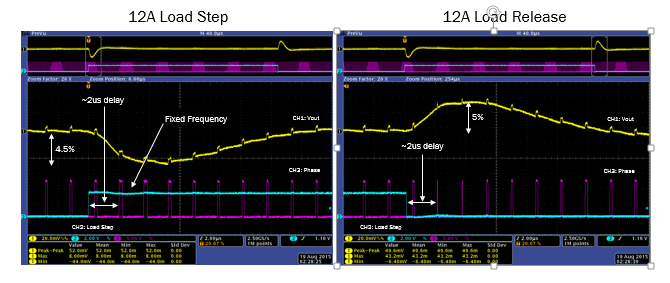
Constant On Time (COT) Loop
COT has the inverse qualities of voltage mode: its frequency is variable but its duty cycle is fixed. The variable frequency helps modulate the load step, load release and peak-peak deviations, but there are still undershoots and overshoots to contend with.

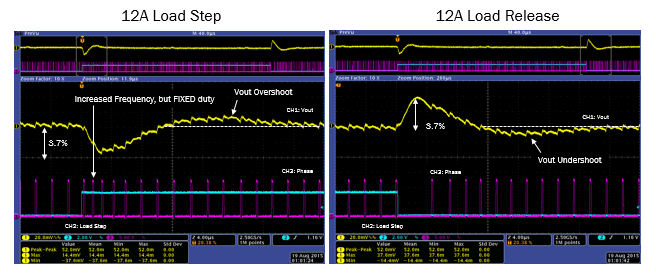
R4 Control Loop
By combining variable frequency with variable duty cycle, the R4 control loop is able to respond instantly to load transients, minimizing Vout deviation.
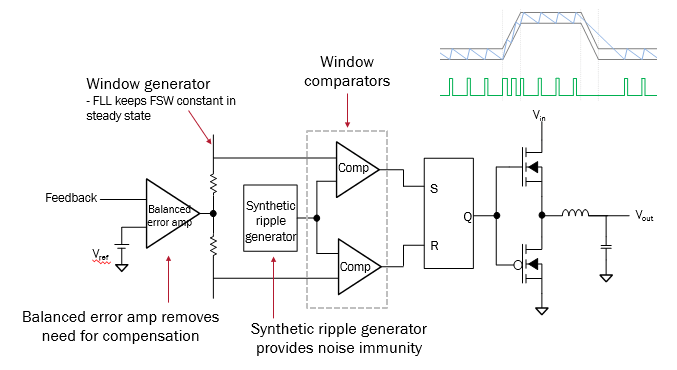
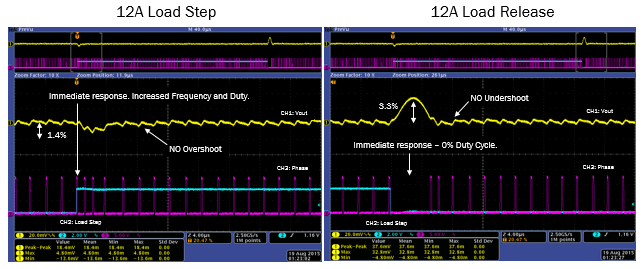
This innovative technology gives your designs much greater stability and efficiency, and its internally generated synthetic current signal minimizes the space used and the number of components required.
| Control Loop | Load Step Deviation | Load Release Deviation | Pk-Pk Deviation | Over/Undershoot | Transient Response |
|---|---|---|---|---|---|
| Voltage Mode | -44mV | +43mV | 87mV | Yes | Fixed Freq. Variable Duty |
| COT | -38mV | +38mV | 76mV | Yes | Variable Freq. Fixed Duty |
| R4 | -14mV | +33mV | 47mV | No | Variable Freq. Variable Duty |
See Also: R5™ Modulation Technology | R3™ Technology